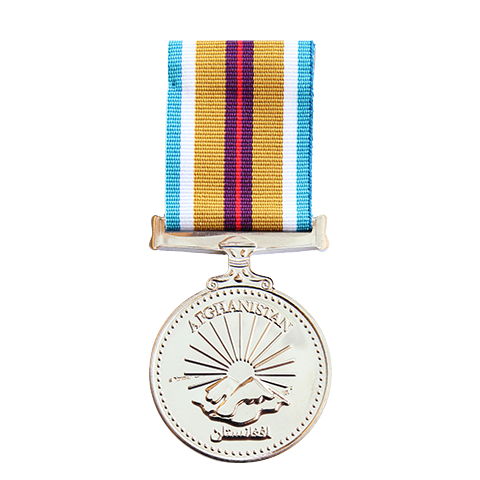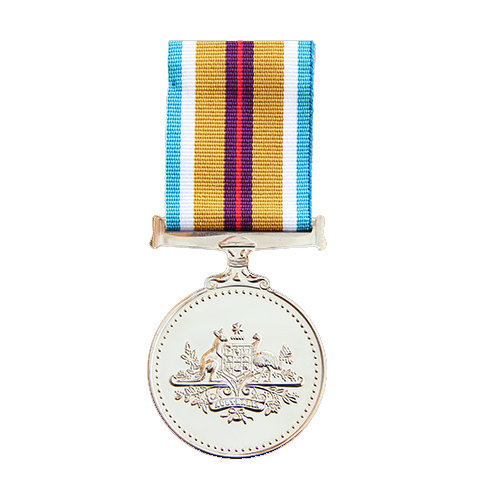

How it is awarded
The Governor-General awards the medal on the recommendation of the Chief of the Defence Force or their delegate.
Australian Defence Force members serving in the following operations are recognised:
- Operation Slipper
- Operation Palate
- Operation Palate II
Eligibility includes a specified period of (aggregated) service or, in the case of Air Force members, a qualifying number of sorties.
The application form is available from the Department of Defence website. To access the Alternate Application Process, please call 1800 333 362.
History
The Prime Minister, the Hon John Howard MP, announced the establishment of the Afghanistan Medal and the Iraq Medal on Anzac Day 2004.
This campaign medal honours those Australian Defence Force members who served, and continue to serve, in and around Afghanistan.
Australian Defence Force deployments to Afghanistan are also recognised through the Australian Active Service Medal clasp 'ICAT'.
The Afghanistan Medal was formally established by Letters Patent on 30 September 2004.
Medal design
The Afghanistan medal features the Commonwealth Coat of Arms on the front.
The reverse of the Afghanistan Medal shows a snow-capped mountain range with a multi-rayed sun rising behind the mountains. The mountains represent the dominant terrain of the country and the rising sun signifies a 'new dawn' for the nation.
The word 'Afghanistan' is inscribed in English and in the Arabic script of the two dominant languages of Afghanistan, Dari and Pashton.
Medal ribbon
The medal ribbon has a central vertical stripe of red, signifying the conflict in Afghanistan. This is flanked by stripes of purple representing the three arms of the Australian Defence Force. Stripes of khaki, white and light blue border the inner stripes. They symbolise the Afghanistan terrain, the snow-peaked mountains and the sky above, respectively.
